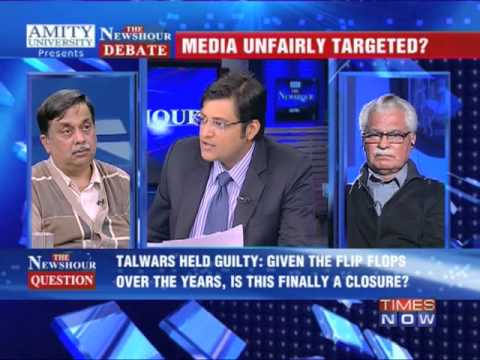by Nurul Ezzati Aisya Mohd Zaki
Article 10 (a) of the Malaysia’s Federal Constitution stated that “every citizen has the right to freedom of speech and expression”. Media is a form of speech and expression in the manner which they transmit information to be consumed by society. The dissemination of information assists society in comprehending issues and molding viewpoints. It is every citizen’s right to freedom of information in order to make informed decisions. However, the freedom is not absolute as stated in Clause (1) of Article 10 – “Subject to Clauses (2), (3) and (4)” whereby Parliament may impose law and restriction on said freedom. Guided by the notion that media is the check and balance for society, freedom of speech and expression is practiced either carefully or provokingly in Malaysia.
In order to understand the media take on freedom of speech and information, this paper will look into cases of trial by media in Malaysia and India. Trial by media is a “dynamic, impact-driven, news media-led process by which individuals—who may or may not be publicly known—are tried and sentenced in the court of public opinion” (Greer & McLaughlin, 2010). The process and object of fascination in any trial by media can be varied, from pre-determine outcome of an actual court proceedings against average everyday people, to the ruthless quest of high-profile personalities and public figures “deemed to have offended in some way against an assumed common morality”.
For a nation to function like clockwork, media has to take its seat as the fourth estate. Developing nations require media to be the watchdog – becoming the eyes and ears of citizen. As part of its power of distribution, media not only can attain information easily but also disseminate them to citizen beyond the restriction of accessibility. Media as watchdog is advantageous for society as they take the role as an agent of change, including making known and educating public of litigation. Trial by media in this sense is a welcoming act whereby media probe into marginalized issues and push them into the limelight. One of the common ways into which media probe an issue or individual, is through investigative journalism. Investigative journalism in its entirety as watchdog monitors authority and capitalist conglomerate, serving society as its stakeholder (Ismail, Ahmad, & Mustaffa, 2017).

The discussion will explore the investigative journalism championed by a group of young journalists for a Malaysia’s English newspaper, The Star. In light of worsening sex crime against children in the country, the team known as R.AGE, trialed men accused of grooming young girls into sexual acts. The 2016 extensive campaign, code name “Predator in My Phone”, includes online petition and a documentary film, is a six months intrepid investigative journalism exposé on pedophiles and the push for anti-grooming law. Sex crime against children is regulated in Malaysia, yet grooming or inviting children to sex act was not criminalized. The R.AGE team saw loop holes in the dire situation and took up the stand as agent of change and played a substantial role in the newly gazette Sexual Offences Against Child Act 2017.
Despite the expedient role media play in uncovering marginalized issues, trial by media can took a distasteful turn into sensationalizing court proceedings. Concurrently with the ongoing court proceedings, some media took to their hand the responsibility to meddle in the actual legal process. This include a separate investigation being run by editorial team related to the case in focus, building ‘a public opinion against the accused’, striping the accused of their dignity and right to privacy. The excessive publicity on suspects on trial may interfere with the administration of justice, due to prejudice and pro-plaintiff bias (Effect of Trial by Media before Courts, 2013).

Prejudice and pro-plaintiff bias are starkly apparent in litigation involving major capitalist conglomerates, public figures or celebrity status individuals. The star power of these proceedings increase viewership and readership which unethical media outlet devoured whole-heartedly. One prominent trialed by media example is the 2008 Noida double murder case, where a 13-year-old girl, Aarushi Talwar and her family live in 45 years old domestic helper, Hemraj Banjade, were found murdered in the Talwar residence. The long trial against Aarushi’s parents, Rajesh and Nupur Talwar as the accused was resolved, though killers still undetermined, as both accused were acquitted of all charges in October 2017. With the encouraging exposure by the media, the Talwar became and still to this day a household name in India. Both Rajesh and Nupur Talwar were trialed by media viciously due to the fact that they are from an affluent physician family in the county. In a recent HBO Asia documentary titled The Talwars: Behind the Closed Doors, the Talwar was still heavily distraught by the loss of their only daughter and the public judgment against them. Since the proceeding and media attack, the Talwar had to shut operation of their clinic and no longer able to practice medicine.
Media without a doubt possess a prevailing ability to reach out and shape public opinion. The power is a mandate by society that needed to be practiced with high ethical and moral stance. It is vital for media organization or individual journalist to write, record or edit with the public interest in mind. Guided by the urge to thrive for truth and unwitty curiosity, media are free to practice their freedom of speech and expression. However, cautious is the name of the game as freedom can be strip off as easily as it is given.
Reference
Effect of Trial by Media before Courts. (2013, November). Retrieved from Law Teacher: https://www.lawteacher.net/free-law-essays/commercial-law/effect-of-trial-by-media-beforecourts-
Greer, C., & McLaughlin, E. (2010). ‘Trial by media’: Policing the 24-7 news mediasphere and the ‘politics of outrage’. Theoretical Criminilogy, 15(1), 23-46. doi:10.1177/1362480610387461
Ismail, A., Ahmad, M., & Mustaffa, C. (2017). Investigative Journalism in Malaysia: The Battle between Outside and Inside Newsroom Challenges. 33, pp. 1-5. SHS Web of Conferences. doi:10.1051/ 73300079